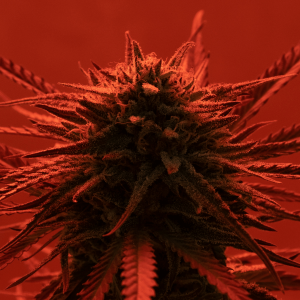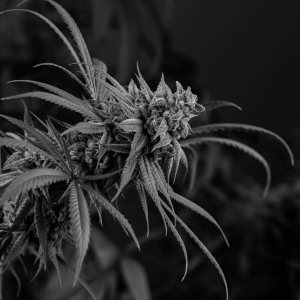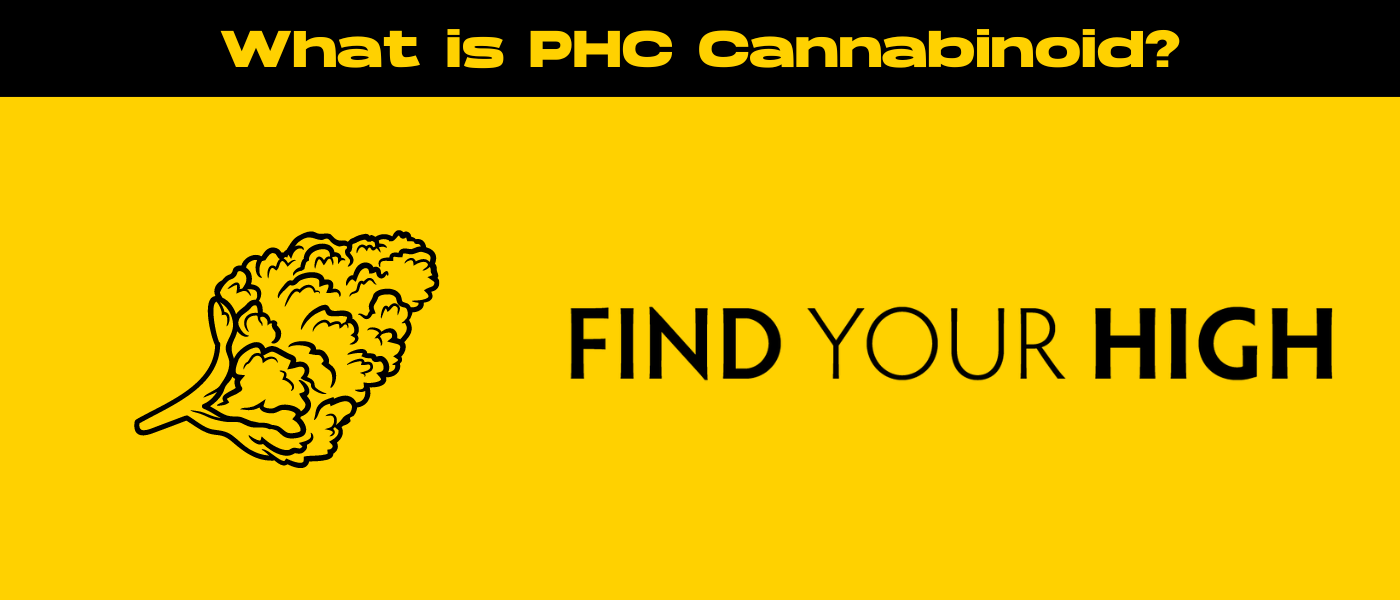Cannabinoids are naturally occurring compounds found in the cannabis plant, beloved by many for their unique effects on the human body and mind. From the well-known THC and CBD to the lesser-known contenders, each cannabinoid plays a crucial role in the plant’s medicinal and recreational properties. One of the more recent discoveries is PHC. What is PHC cannabinoid, you may ask?
In this guide, we’ll be diving into PHC cannabinoid, a lesser-known but increasingly significant member of the cannabinoid family. You’ll learn about what PHC is, how it works, its potential benefits, and why it’s becoming a focus of interest among researchers and stoners alike. Let’s begin!
What is PHC Cannabinoid?
PHC, or Phenethylhydroxycannabinol, is one of the many naturally occurring cannabinoids present in the cannabis plant. While THC and CBD often hog the spotlight, PHC is slowly making waves in the world of cannabis research.
A cannabinoid derived from the cannabis plant, PHC weed is known for its unique chemical structure and effects, setting it apart from its more famous counterparts. In essence, while THC is popular for its psychoactive properties and CBD for its therapeutic benefits, PHC falls somewhere in between, offering a mix of both worlds.
The discovery of PHC traces back to the continued exploration of the cannabis plant’s complex makeup, with researchers increasingly uncovering its potential benefits and applications.

The Science Behind PHC
PHC boasts a distinctive chemical structure that intrigues both scientists and enthusiasts. This psychoactive compound interacts with the body’s endocannabinoid system, a complex network responsible for maintaining balance in various physiological processes.
The interaction primarily occurs through CB1 and CB2 receptors, where PHC binds to elicit its effects. CB1 receptors, mostly found in the brain, help modulate mood, appetite, and pain sensation, while CB2 receptors, located in the immune system, play a crucial role in inflammation and immune response.
Through this intricate dance with the endocannabinoid system, PHC can influence a range of mental and physical states, adding another layer to the fascinating world of cannabinoids.
Potential Benefits of PHC
PHC cannabinoid is becoming a focal point in cannabis research due to its interesting range of potential benefits.
Here are some of the most promising areas where PHC might make an impact:
- Pain management and relief: Like many cannabinoids, PHC may offer significant pain relief by interacting with the CB1 and CB2 receptors in the body’s endocannabinoid system. This makes it a potential alternative or supplement for those dealing with chronic pain.
- Anti-inflammatory properties: Inflammation is at the root of many chronic diseases, and preliminary research suggests that PHC could help reduce inflammation. This could be beneficial for conditions ranging from arthritis to autoimmune disorders.
- Potential mental health benefits: Early studies indicate that PHC might help alleviate symptoms of anxiety and depression. By modulating the endocannabinoid system, PHC could support a more balanced mood and reduce the intensity of these mental health issues.
- Emerging research and potential future benefits: The field is still in its infancy, but ongoing research continues to uncover new ways in which PHC could be used therapeutically. From neuroprotection to possible anticancer properties, the future looks promising for this underexplored cannabinoid.
How PHC Differs from Other Cannabinoids
PHC products differ from THC, THCa, and CBD due to their unique chemical structure and how they interact with the endocannabinoid system.
Unlike THC’s strong psychoactive effects, PHC provides mild psychoactivity and therapeutic benefits, offering a middle ground between THC’s high and CBD’s non-psychoactive relief. THCa, by contrast, is non-psychoactive with its own potential therapeutic effects.
PHC’s legal status is also evolving, with varying regulations compared to THC, THCa, and CBD. This makes PHC a unique and intriguing cannabinoid for further exploration.

Methods of Consuming PHC
When it comes to consuming PHC, there’s a method for everyone. Here are some of the most popular forms:
Oils
PHC oils are versatile and can be taken sublingually (under the tongue) for quick absorption or added to food and drinks for a more gradual effect.
- Pros: Easily adjustable dosage, quick absorption, versatile use.
- Cons: The taste may not be pleasant for everyone.
Edibles: PHC-infused edibles, like gummies or baked goods, offer a tasty and discreet way to enjoy the benefits of this cannabinoid. However, the effects of edibles take longer to kick in because they have to be digested first.
- Pros: Long-lasting effects, discreet, comes in various tasty forms.
- Cons: Delayed onset of effects, harder to gauge the correct dosage.
Vapes: Vaping PHC provides almost immediate effects, making it a popular choice for those looking for quick relief. The vapor is inhaled directly into the lungs, allowing for rapid absorption into the bloodstream.
- Pros: Immediate effects, easy to control dosage, portable.
- Cons: Potential respiratory risks, effects don’t last as long.
Topicals: PHC creams, balms, and lotions can be applied directly to the skin (hence, topicals) to target localized pain or inflammation, making them a good option for those who prefer not to ingest PHC.
- Pros: Targets specific areas, non-psychoactive, easy to use.
- Cons: Limited to external use, may not be suitable for systemic relief.
Tips for Beginners on How to Start Using PHC
If you’re new to PHC, here are some tips to help you get started:
- Start Low and Go Slow: Begin with a low dose and gradually increase it until you find the amount that works best for you.
- Choose the Right Method: Consider your lifestyle and preferences when selecting a consumption method. For quick relief, vaping might be your best bet, while edibles are better if you’re looking for long-lasting effects.
- Consult with a Professional: Speak with a healthcare provider who can give you personalized advice based on your specific health needs and conditions.
- Stay Informed: The field of cannabis research is rapidly evolving, so keep up with the latest studies to make informed decisions about your PHC use.
Safety and Side Effects
While PHC is generally considered safe, some users may experience side effects. These can include:
- Dizziness
- Dry mouth
- Changes in appetite
- Mild drowsiness
- Anxiety or paranoia (at high doses)
Long-term Safety Considerations
Long-term effects of PHC are still being studied, but current research suggests the following considerations:
- Tolerance: With repeated use, you may need higher doses to achieve the same effects.
- Dependency: While not as likely as with THC, there is still a risk of developing a dependency on PHC.
- Cognitive Effects: Long-term use may impact memory and cognitive function, especially in younger users.
Guidelines for Safe Consumption Based on Current Research
To ensure a safe experience with PHC, follow these guidelines:
- Start with Low Doses: Begin with a minimal amount and gradually increase as you become more accustomed to its effects.
- Limit Frequency: Avoid daily use to prevent tolerance and dependency from developing.
- Monitor Your Reactions: Keep track of how your body responds to PHC and adjust your usage accordingly.
- Stay Informed: Always stay updated with the latest research and guidelines to ensure you’re consuming PHC safely and effectively.

The Legal Landscape of PHC
Navigating the legal landscape of PHC can be a bit tricky since it varies significantly from one region to another.
In the USA, PHC’s legal status is still evolving, with federal laws allowing some forms of hemp-derived cannabinoids while other states have stricter regulations that might include or exclude PHC.
In Europe, the situation is similarly complex; while some countries have embraced the therapeutic potential of psychoactive cannabinoids, others maintain stringent restrictions.
It’s essential for consumers to stay informed about the latest legal updates in their specific location to avoid any potential legal issues. One way to do this is by regularly checking government websites or reputable news sources that cover cannabis legislation.
Research and Future Prospects
Research on PHC is still in its early stages, but it’s gaining momentum. Several studies have begun to explore its potential therapeutic benefits, including its ability to manage pain, reduce inflammation, and possibly even offer neuroprotective effects.
Some prominent studies have shown promising results, suggesting that PHC could be a valuable tool in treating various medical conditions.
Looking ahead, the future of PHC research seems bright with ongoing investigations aiming to uncover more about its efficacy and safety. As more data emerges, we can expect a deeper understanding of how PHC interacts with the body and its potential to revolutionize cannabinoid therapy.

Conclusion
In this blog, we’ve covered the essentials of PHC, including its various consumption methods, tips for beginners, safety considerations, and the ever-changing legal landscape. We’ve also explored the current state of research and the future prospects of this promising cannabinoid.
Staying informed about new cannabinoids like PHC is crucial for making educated decisions about their use. With the convenience of cannabis delivery services, you can easily access PHC products and stay up-to-date with the latest offerings. Always conduct your own research and consult with healthcare professionals to ensure you’re using PHC in a safe and effective manner. With a mindful approach, you can navigate the evolving landscape of cannabinoids and make the most of their potential benefits.
Frequently Asked Questions
1. What are PHC cannabinoid effects?
PHC cannabinoids are known for their therapeutic effects, which can include pain relief, reduced inflammation, and relaxation. Users also report experiencing mild euphoria and an overall sense of well-being. However, the effects can vary depending on the dose and method of consumption. It’s important to start with a low dose and gradually increase it to ensure a positive experience.
2. Is PHC a synthetic cannabinoid?
No, PHC is not a synthetic cannabinoid. PHC, or Phytocannabinoid, is a naturally occurring compound found in cannabis plants. Unlike synthetic cannabinoids that are chemically manufactured in a lab, PHC is derived from the hemp or cannabis plant, making it a natural option for those seeking cannabinoid therapy.
3. What is a PHC strain?
A PHC strain refers to a specific variety of cannabis that has been cultivated to contain high levels of Phytocannabinoids. Different strains can have varying concentrations of PHC and other cannabinoids, which can lead to different effects and benefits. When selecting a PHC strain, it’s helpful to consider what kind of effects you’re looking to achieve and consult with knowledgeable sources to find the best match for your needs.
4. Is PHC safe to vape?
Vaping PHC is considered safe for most users, offering quick absorption and immediate effects. However, it’s important to purchase PHC vape products from reputable sources to ensure they are free from harmful additives and contaminants. Be mindful of potential respiratory risks, and if you experience any adverse effects, discontinue use and consult a healthcare provider.

 Rewards
Rewards




